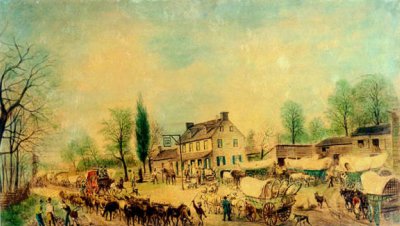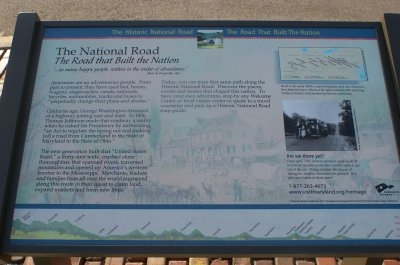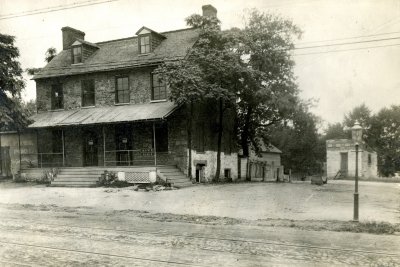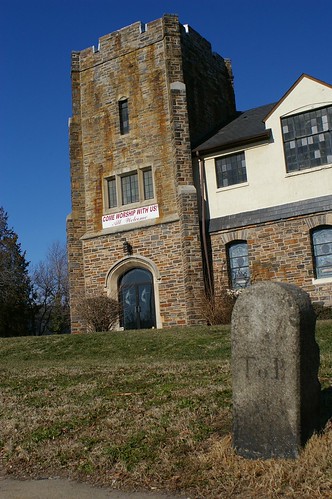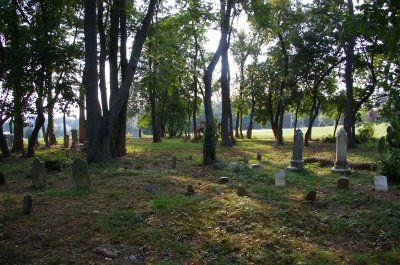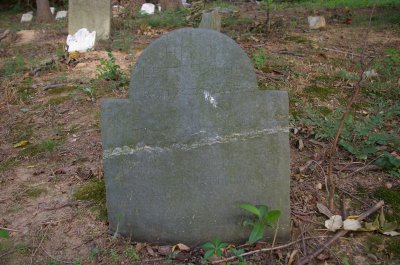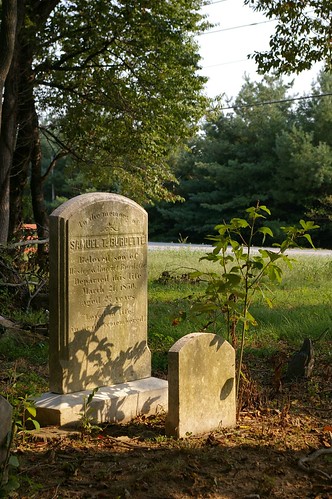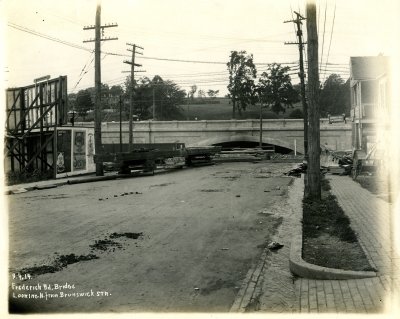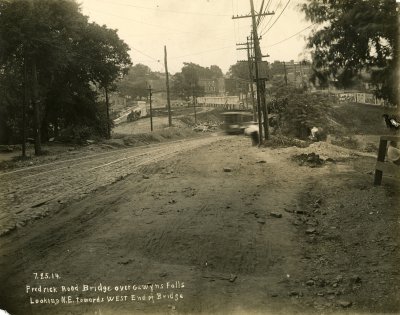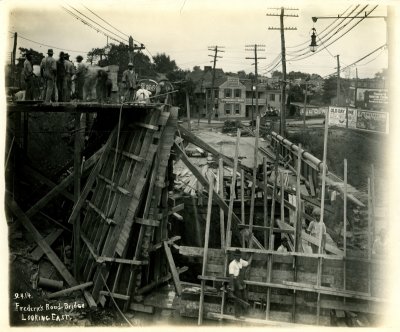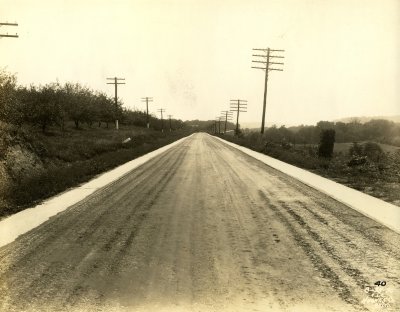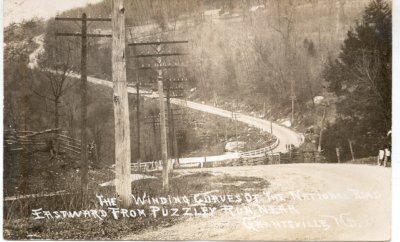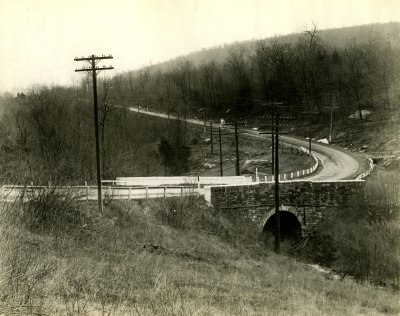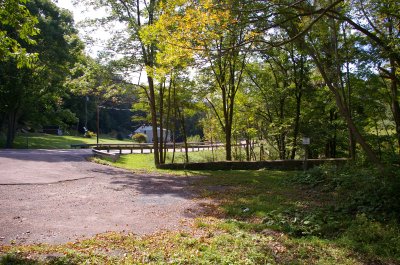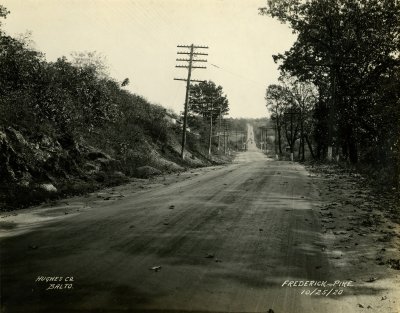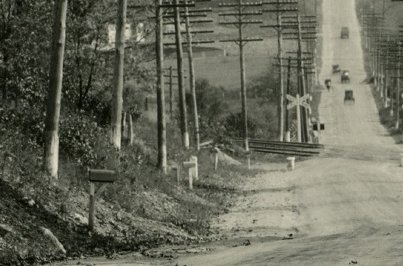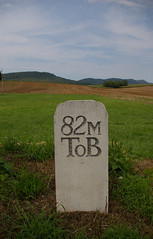
Polish Mountain is on the National Road, about two miles east of Flintstone, Maryland, in Allegany County. The route of the road on the east side, Maryland State Route 144, remains relatively unchanged. This photograph, taken in 1921, illustrates the east face of the mountain quite well.
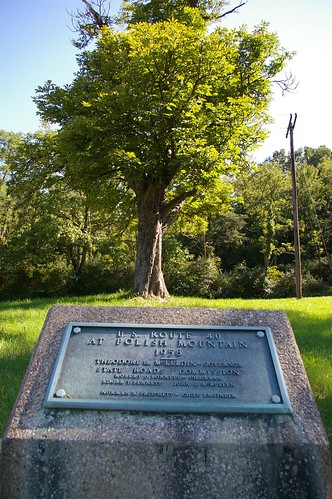
The route that is signed as the National Road Scenic Byway, differs somewhat on the western side of the mountain. In 1958, Route 40 (now Maryland 144) removed many of the curves on the National Road for a much easier drive. The old alignment of the National Road is now known as Gilpin Road NE, and provides for a much more fun drive, though it does have fewer places to stop and take photographs, due to very narrow or nonexistent shoulders. This tablet, erected in 1958, is just west of the turnoff for Gilpin Road.

The view from the top of Polish Mountain can be quite spectacular. Below, I-68 cuts across the landscape.
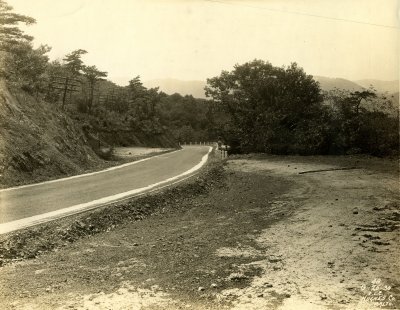
This realignment is just the summit, as seen looking west. Note the "lighthouse", on the right side of the road, near the curve, warning motorists to slow down. On the old path of the road, to the left, one can see a vertical bar with diagonal stripes, also warning motorists to slow down.

Seventy five years later, the landscape has changed little. This view shows the same realignment, but as seen from the opposite direction.

The road west from the summit of Polish Mountain was a difficult one. Some period postcards claimed "17 curves," many with sharp drop-offs like this one. The vertical bar with the diagonal stripes was a sort of warning sign, indicating a situation where motorists might need to slow down.
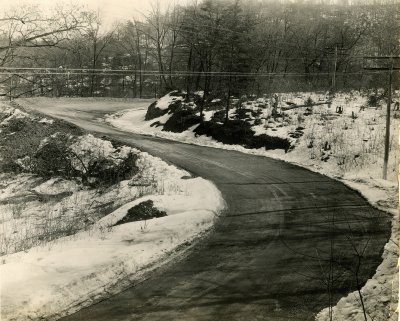
More curves like this one presented themselves as the motorist continued down the mountain. June 1932?
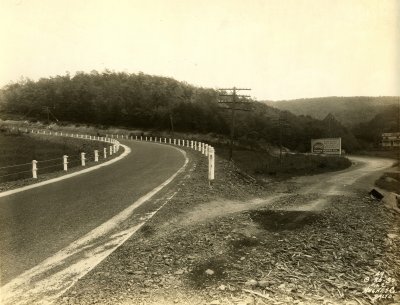
This photo is at the foot of the west slope Polish Mountain looking east showing relocation of the road and the new guard rail. The billboard on the old alignment is for Amoco Motor Oil. It reads "Low cost per mile is what counts!"
Some of the realignments discussed above are illustrated on this map.
All black and white photographs are used courtesy of the Enoch Pratt Free Library, Central Library / State Library Resource Center, Baltimore, Maryland. All black and white photographs are by the Maryland State Roads Commission, except for the first one, which is by the Maryland State Department of Forestry.
